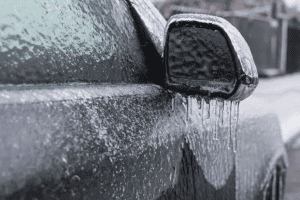Choosing the Perfect Tool for Your Auto Paint Project
In the world of auto paint, your paint gun is your trusty steed. But with a vast array of options available, picking the right one can feel like navigating a winding road. Fear not, fellow car enthusiasts! The Auto Paint Depot is here to shed light on the different types of paint guns and help you steer toward a perfect finish.
Gearing Up: Understanding Paint Gun Types
-
High Volume, Low Pressure (HVLP): The champion of eco-conscious painters, HVLP guns use lower air pressure to achieve a fine spray pattern. This translates to less paint waste and a smoother finish, making them ideal for applying base coats, clear coats, and single-stage paints.
-
Conventional Paint Guns: These workhorses have been around for decades and deliver a powerful spray pattern, perfect for laying down heavy primers and thick paints. However, they can be less material-efficient compared to HVLP guns.
-
Gravity Feed vs. Pressure Feed: This refers to paint delivery. Gravity-feed guns, popular for their control and user-friendliness, hold paint in a cup at the top of the gun. Pressure-feed guns, on the other hand, pull paint from a pressurized tank, making them suitable for larger jobs or thicker materials.
Choosing Your Champion: Matching Gun to Project
- Weekend Warrior: For small touch-ups, restorations, or applying base coats and clear coats, an HVLP gravity-feed gun is your perfect partner.
- Seasoned Painter: If you’re tackling large projects or using primers and thick paints, a conventional pressure-feed gun might be a better fit.
- Budget-Conscious: While HVLP guns offer environmental and material benefits, they tend to have a higher initial cost. Conventional guns can be a more budget-friendly option, especially for occasional use.
Beyond the Basics: Pro Tips for Choosing a Paint Gun
- Consider your experience level. HVLP guns are generally easier to handle, while conventional guns require more technique.
- Think about project size and complexity. Larger jobs might benefit from the power of a conventional gun.
- Read reviews and compare features. Look for factors like nozzle size, spray pattern control, and ease of maintenance.
The Auto Paint Depot Advantage:
At The Auto Paint Depot, we offer a wide range of top-quality paint guns from trusted brands. Our knowledgeable staff is always happy to answer your questions and help you find the perfect tool for your needs.
Ready to hit the road to a flawless finish? Visit The Auto Paint Depot today and let our experts guide you to paint gun perfection!
Bonus Tip: Don’t forget to check out our comprehensive selection of automotive paints, primers, and clear coats to complete your refinishing arsenal! Check out these other videos to help you chose the right tool for your Auto Paint project!


